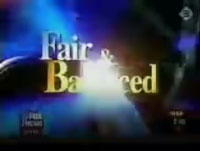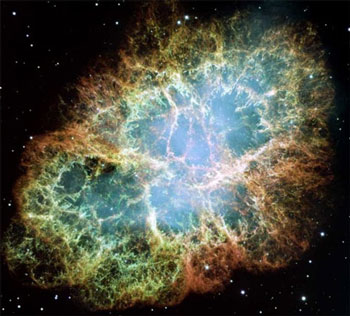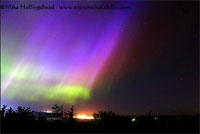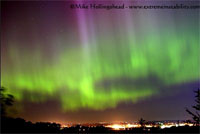 |
→ January 2006 Contents → E-bits
|
E-Bits
Putting the Happy in Happy New Year |
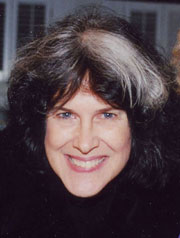 |
||||||
|
Starting on January 1st, everyone everywhere has been offering each other the standard greeting of "Happy New Year!" As I observe those around me, I'm hearing a small question mark following the statement, as if everyone wants the coming year to be happy, but no one is quite sure how to achieve it. Change, it seems, has accelerated in the last year; many sweeping and devastating events have occurred, and each of us has borne witness. Unless we are highly insulated or totally oblivious, most are feeling an impact from far-away places right here in our own hearts, minds and pocketbooks. The people of New Orleans and the Gulf -- and of the regions to which many were dispersed -- are all still in limbo. Those of us on the home front can only imagine what it is like to be 1/2-a-world away in a war zone in Iraq, Afghanistan or elsewhere at the site of the aftermath of the tsunami in Indonesia; or perhaps in Darfur where people are starving and dying; or in the mountainous regions of remote areas of Pakistan where victims of the October earthquake still struggle for survival and crude shelter. Even though the mainstream media spared us the most graphic images of these human and geophysical disasters, we are conscious of catastrophe and suffering of great magnitude. We applaud the first days of reporting in New Orleans after Katrina, when the truth was unfiltered, and the public had access to the reality of the situation as it unfolded. Many of us at The Digital Journalist take issue with the degree to which selective sanitization of images takes place on a regular basis in the media. How can we be completely conscious of the facts if the harsher ones are edited? Photojournalists make tremendous sacrifices to record the truth and to show the world what is happening, and they want their photographs to be seen. Moreover, a conscious and aware public depends on vital and accurate feedback from The Fourth Estate. My two bits -- all politics aside -- are that human potential cannot flourish unless the expansion of consciousness is fostered.
Human consciousness emerged with a local and regional awareness at best. In the grand scheme of things, it wasn't so very long ago that we thought the world was flat and if you sailed off on the ocean, you would soon just drop off the earth. Even when we had found out there were places on the other side of the earth, we couldn't imagine actually going there, and distant regions were so unfathomably far away that news of a massive tragedy would have little effect on anyone who wasn't at or near the actual scene. Mass communication, travel, and space flight have brought us into world-consciousness, and it has been possible for two generations now to be eyewitness to events as they occur anywhere in the world. Though we do not necessarily feel the impact of an event on a physical level, we cannot help but feel it in an abstract way, at the level of the mental, the emotional, and the spiritual. With collective consciousness thus changed and charged with the potential to encompass everyone, it means that our social order is changing with it, whether we like it or not. Given these parameters, we are forced to find a new relationship to our own lives, to those around us, and with the world. Artists and spiritual masters have been imploring us for decades that we are one, that what happens anywhere in the world happens to us. Recently I heard the award-winning song from 1985, delivering a message that now seems true: "We are the World."
Astronauts report the profundity of seeing the earth from space, and astronomers everywhere romance the stars. Amateur stargazers seek out dark areas with little ambient light for optimal viewing. Imagine being alone in the desert a thousand years ago, illuminated only by starlight, simply looking at the astronomical dome above and pondering the miracle and magnitude of the heavens. Do we have to wonder why nomadic people were among the first poets, and their poetry was about the stars; or why the first sciences emerged from detailed observations of celestial phenomena; or why Shakespeare wrote about the affairs of men and their fate in regard to the stars? For inspiration, and sometimes explanation, we turn to the cosmos: "The fault, dear Brutus, lies not in the stars, but in ourselves, that we are underlings." (Cassius in Julius Caesar) "I thank my stars, I am happy!" (Mavolio in Twelfth Night) Speaking of happiness, I don't know about the rest of you, but I would like much less shock and a lot more awe in this New Year. Ponder these astronomy photos from NASA, as I do every day, for mysterious and natural wonders hidden from the naked eye but revealed by space technology. No sanitization necessary, and perspective broadened. If these do not inspire awe, I do not know what will.
Technological assistance is not at all necessary to see some of the more majestic natural phenomena, though one must travel to the right place at the right time. Meteorologists tell us that September, October and November are typically the best months for viewing the Aurora Borealis, also known as the Northern Lights, because those months have a preponderance of geomagnetic storms caused by solar wind gusts or coronal mass ejections hitting the earth's magnetosphere. As these gusts and ejections reach the magnetic bubble that encompasses the earth, trapped protons and electrons are released, which rain down on the earth's atmosphere causing the air to glow with fantastic and unpredictable colors. Auroras happen all year 'round, but anytime, anywhere, you can sit at home and see the best light show ever on your desktop, brought to you by NASA's Spaceweather's Aurora Gallery, Dr. Tony Phillips, webmaster. Pages and pages of aurora photographs from the mainland USA to Canada and Alaska, from Ireland, Norway, Finland, and the Arctic Polar Circle are presented on the site. Happily for readers of The Digital Journalist, the aurora photographers, almost all of them amateurs, list the camera type, lens and exposure times for most of the images. If you live in an area where any of these images came from, make a note to go outside and look for them when the season is right. We would love it if you would report back with a firsthand account. Click on any one of these images to explore the Northern Lights.
With so much going on in multiple theaters here on earth, I'm finding it pleasant to remember what nature has to offer free of charge, and with no dire consequences. I hate it that I have to remind myself these days to seek the positive, but my resolution for the coming year is to do so on a daily basis. Please join me and The Digital Journalist in bringing a little more wonder into our lives as we start 2006. And we mean it when we say, Happy New Year!!
© Beverly Spicer
The links that appear in this column are from the World Wide Web. Credit is given where the creator is known. The Digital Journalist and the author claim no copyright ownership of any video or photographic materials that appear herein. |
|||||||
Back to January 2006 Contents
|
|
